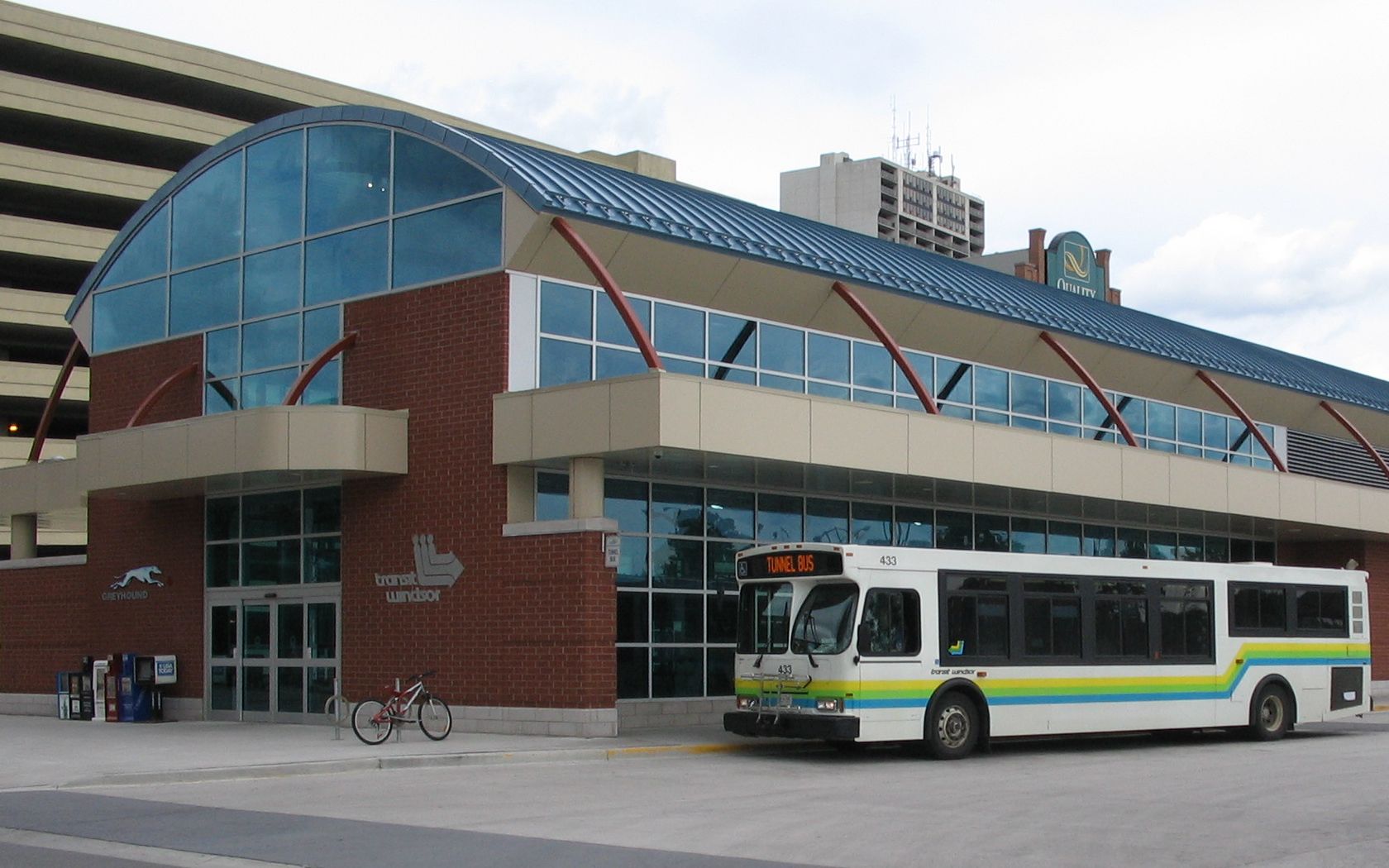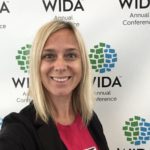I’ve just returned from the 2018 WIDA conference in Detroit, Michigan. Despite being one of the few attendees from a non-WIDA state, I had a quick commute across the Detroit River from Windsor, Ontario. In fact, the trusty tunnel bus, which runs under the river, had me at the Cobo Center in less than 30 minutes. Throughout the week, I noticed several attendees looking across at the Canadian flag, wishing they had packed a passport.

By jodelli - File:Windsor International Transit Terminal 2626311587.jpg, CC BY 2.0, Link
As head of publishing at ESL Library, I attended WIDA to immerse myself in academic language for ELLs, our publishing priority for 2019. Many of our new and longterm ESL Library subscribers teach in WIDA states, and we are often asked how our materials align with WIDA’s philosophy, standards, and proficiencies. In addition to learning all about WIDA in order to address these concerns and requests, I attended fantastic keynotes and sessions and gained valuable information for our materials writers.
This was my first WIDA conference, and one of the best language teaching conferences I’ve ever attended. The conference included delicious meals and well-timed breaks with access to coffee, water, and snacks throughout the day. The app was very handy, and the session rooms were well marked and easy to find. Most importantly, the speakers were excellent, and I was able to get into all of the sessions I had scheduled. Here are some of the highlights and takeaways from this great week of PD:
WIDA 2018 Keynotes
In the opening keynote, Ofelia Garcia, an expert in bilingual education, talked about translanguaging: going beyond two or more languages. Garcia reminded us that language is much more than a code. Language is also culture. Garcia spoke passionately about the unfairness of America’s current assessment practices of bilingual students, pointing out that many US students learn two language simultaneously. They do not have an L1 or L2. Yet, we evaluate them with only half of their language repertoire. As well as questioning our assessment practices, we should be mindful of how we label our learners.
On day two, Gloria Ladson-Billings [below] spoke about keeping our materials current, saying that culturally relevant teachers search high and low for resources (and often create their own) to ensure that students are engaged with the topics of today.

On the final day, we heard from Utah Senator Howard Stephenson who asked teachers to embrace digital technology and machine learning. Stephenson believes that teachers should allow digital technology to do the “heavy lifting,” so that teachers can concentrate on working creatively and collaboratively with their students. Senator Stephenson also shared the success of the dual-language programs in Utah and the importance of bilingual education. I have no doubt that many monolingual teachers in the audience were inspired to go home and sign up for a language learning class.
To close out the conference, WIDA family engagement specialist Lorena Mancilla shared a personal story about growing up in Chicago as an American with Mexican roots. After moving away from the comforts of her community of relatives in a Latino neighborhood and enrolling at a predominantly white school at the age of 8, Mancilla internalized the idea that she was “different” and that her family’s culture was “not appropriate.” Through story, Mancilla challenged teachers to find new ways to enhance home, school, and community engagement in order to empower our future leaders.
WIDA 2018 Sessions
In my favorite WIDA session of the 2018 conference, Rhonda Bondie shared the value of noting two takeaways every time you learn something new. Here are just a few things I learned at three of the most useful WIDA sessions I attended.
1. Student Discussions: Increasing Equity, Engagement, Access and Rigor
Rhonda Bondie
Rhonda Bondie taught workshop participants several classroom learning routines (e.g., Domino, Rumors, QAPS, 2 X 2 X 2) that can add rigor and engagement to a lesson. One common theme in the routines was allowing for increased thinking time for both students and teachers.
Bondie recommended looking at every classroom task as one of the following four structures:
- Explicit Instruction: pencils down, listen, teachers only say what students can remember without taking notes
- Free Discussion: students turn and talk informally, teachers can move around and participate
- Individual Task: students spend time thinking and testing themselves before they have to talk, help resources are available, all students should be able to start on their own
- Group Task: structured task, has rules (e.g., only one has a pencil), has roles (e.g., reporter, recorder), teacher observes, uses appropriate seating (e.g., one strong reader per grouping)
Note: After returning from WIDA, I tried one of the routines to get my son tying his own hockey skates, and it worked!
2. Newcomer ELs: How Experiences Shape Self‑Identity
Jennifer Santiago
In this session, graduate student Jennifer Santiago shared her findings on the subject of student identity. Santiago compiled research on self-identity from a group of Central American newcomers at her school. Santiago learned that many teachers made assumptions about newcomers that were not true, especially regarding newcomers’ educational background. She also discovered that many high school newcomers were not getting the career and academic counseling that they needed and deserved.
Negative experiences with teachers had a strong impact on newcomers’ self-identity. Many believed that they were “bad” because they struggled with English. In contrast, positive experiences with helpers around the school (e.g., a police officer) had a positive impact on their self-identity. Santiago concluded that teacher-ed programs were not focusing enough on the importance of teachers’ interpersonal skills (e.g., disposition) when working with newcomers.
Today was an amazing day @WIDA2018! I met the iconic Gloria Ladson-Billings, presented two presentations with great colleagues, and one presentation by myself where I shared my dissertation findings. I’m proud of all the work! Plus so much networking! ❤️#WIDA2018 pic.twitter.com/4NRQlcg1el
— Jennifer Santiago, PhD (@DR_ESOL) October 25, 2018
3. Building the Academic Identity of SIFE Through Oral Language Activities
Syndey Snyder
By the final day, many of the attendees had tired of being active participants but Sydney Snyder’s SIFE (Students with Interrupted Formal Education) activities were engaging and useful, and we all found the energy to turn and talk one more time. In addition to going over the typical weaknesses SIFEs have (not always understanding the point of tasks, at risk of dropping out, struggling to work independently), Snyder pointed out some of their common strengths (resilience, problem solving, comfortable working in groups).
The presenter also showed an excellent video of an experienced SIFE teacher modeling good classroom practices, such as handing out exit tickets with sentence stems for written and oral practice. Students were encouraged to write and then vocalize their challenges and achievements to help them gain confidence and identify as academic learners.
A Conference Near You
On my way back to Windsor, I was pleased to meet up with two brave teachers from Alabama taking the tunnel bus to Canada! I offered them a few tips, and we made plans to meet up at a conference in their neck of the woods: TESOL 2019 in Atlanta.
When you’re this close, you visit Canada! pic.twitter.com/xKJwOEn81m
— Anna Suthoff (@TeachEB_Suthoff) October 26, 2018
Before TESOL in March, members of our team will be attending other smaller conferences, including TESL Ontario (Toronto) and CoTESOL (Colorado) this week. We hope to see some of you this conference season or in Rhode Island for WIDA 2019!

—Tara


There are no comments on this post. Start the conversation!